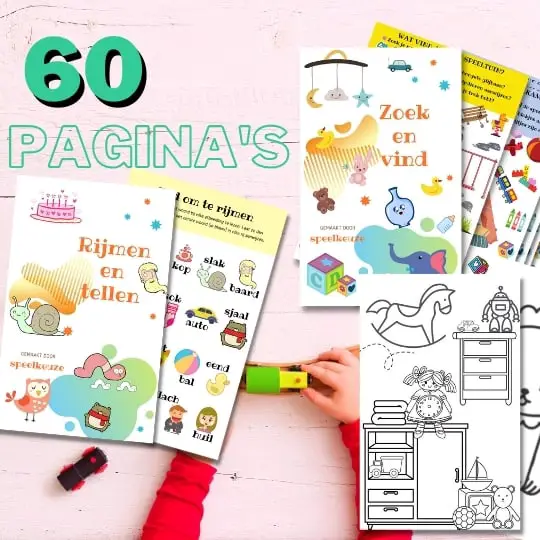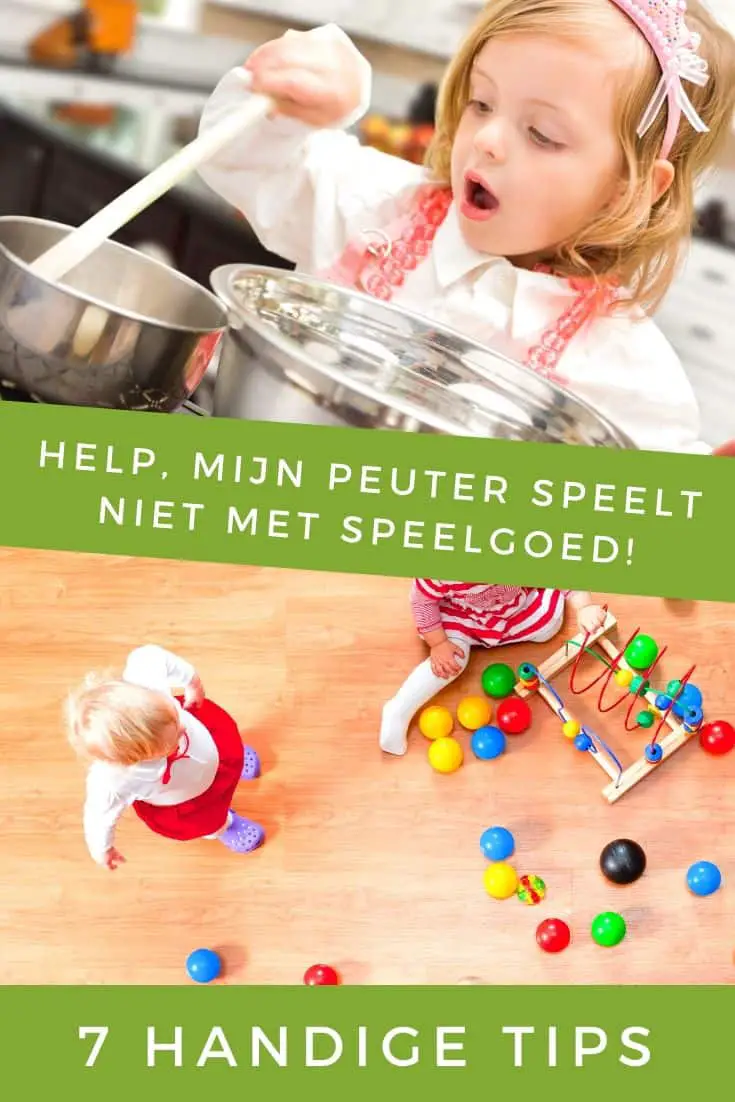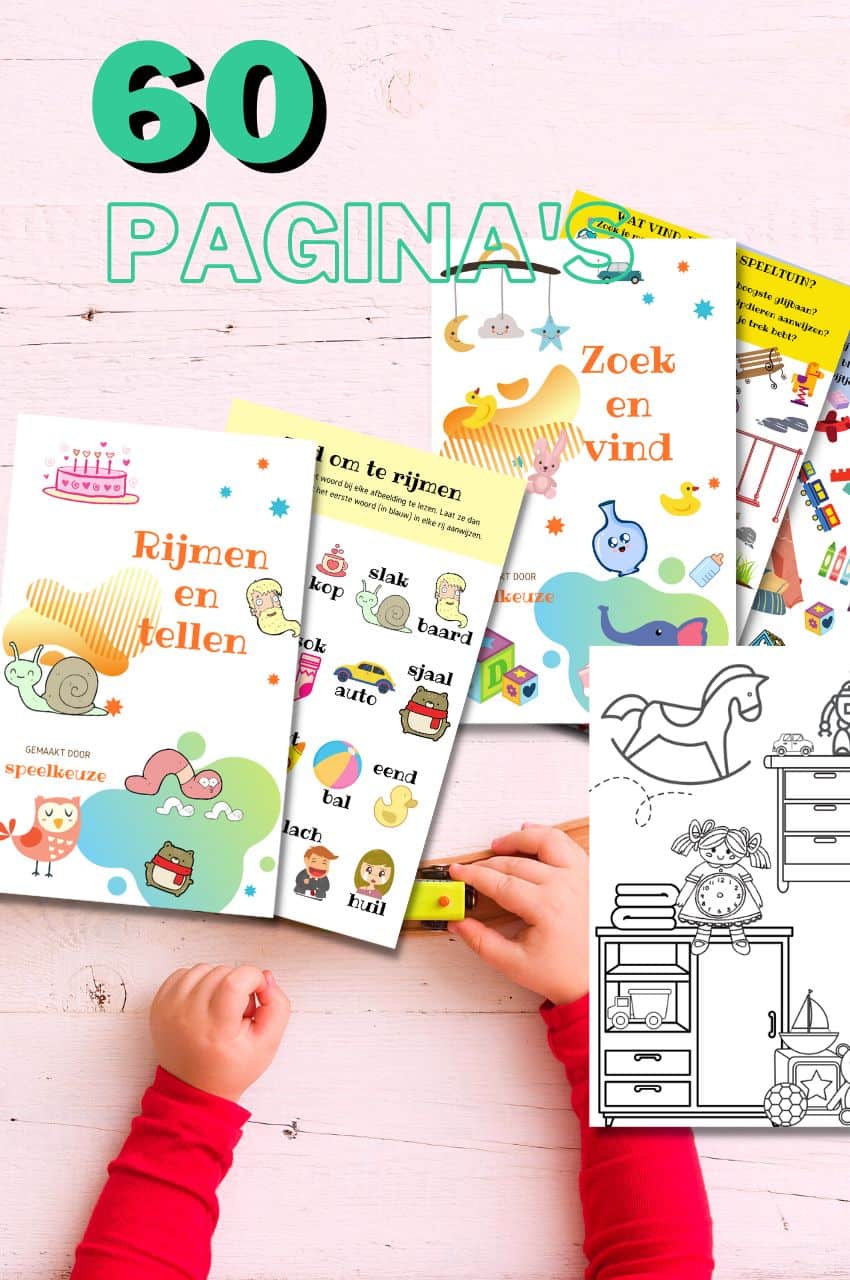Why is my toddler not playing with toys? Use these 8 tips

Always something to do for the holidays or rainy day?
Play Choice now has the ultimate activity book collection, with over 60 pages of fun coloring pages and educational puzzles.
It's not often you hear a parent say, "Gosh, I wish my kid had more toys."
After all, moms and dads spend a lot of their days cleaning up clutter and tripping over Lego, right?
Don't be too disappointed if he doesn't seem to know how to play with new toys himself.
And, don't fall into the trap of thinking "he shouldn't like it" when he's not playing with toys.
In this article, I want to talk to you about the possible reason your toddler isn't playing with toys and some tips on how to do something about it, from play routine to deconstruction (don't worry, I'll explain what it is in a minute).


From toddler to toddler activity book collection
Educational games and coloring pages for 3 to 6 years
Your toddler and preschooler will love this e-book, along with the accompanying printables. He or she can play with it at every stage of development, together with mom and dad.
Buy at Bol.comWhat we discuss in this comprehensive post:
Why doesn't my child play with toys?
When a 1 to 2 year old toddler doesn't play with toys, it usually means he doesn't know how to play.
This can also be the case with toddlers aged 2 to 4 years, but it is often related to too many or not the right toys.
When kids don't know how to play, we should teach them just as we should teach them everything else.
But there are quite a few parents who wonder:
Why doesn't my child play with toys?
Your child may not know where to start, how to play with the toys. Then you will have to demonstrate it yourself, or show it in a different way. It may also be that you just have too much choice of toys.
Can you have too many toys?
If you're up to your head in the toy, then you may want to take the age-old lesson of quality over quantity.
That's because the problem may not be in how many toys your child has, but whether or not they are the right ones, says Dr. Christopher Willard, author of Raising Resilience: The Wisdom and Science of Happy Families and Thriving Children.
Children, especially toddlers, naturally want to learn to master their toys, trying the challenges it presents them over and over again.
That is also why the boring repetitive game for you is so much fun for them, as I have written about before in how to play well with your toddler.
They don't need superficial relationships with as many possessions as possible.
You probably noticed early on in your child's life that kids want the same books and games over and over again.
The repetition can drive us adults crazy, but it is actually crucial to a child's cognitive development.
Willard points to studies showing that when children have too many toys, even more than five at a time, they are less able to concentrate on learning and mastering them.
You've probably also seen how creative and engaged children become when they have to come up with new toys and games out of practically nothing.
If necessity is the mother of invention, boredom may be the father.
Making your toddler more interested in toys
Let's take a look at the ways you can make your toddler more interested in toys.
Good example to follow
So ... get yourself ready, lie on the floor and play with the toy yourself.
That's what many toddlers need before they understand how toys work.
This takes some effort, but it pays off!
Playing routine
If your child still doesn't really want to play after demonstrating it yourself (with enthusiasm), you may want to tweak your play strategy.
You teach a child to complete a play routine instead of playing a little with a toy yourself.
By creating a small play routine that is short enough for them to keep their attention, they can see how something works from start to finish.
And then do it again, and again, and again, and again.
That's where they learn and maybe can hold the interest in the toy, the power of repetition.
The construction
One of the things that works best for toddlers who don't play with toys starts with a strategy I call deconstruction.
It shows how to take a toy apart instead of putting it together.
Of course I don't mean demolishing anything, but there are many types of construction toys that you can also put together and then show how you take it apart.
This way your toddler can already see what it should look like, and then be amazed that it can come apart again into blocks, or pieces or radars.
Always take age-appropriate toys
We all look at the recommended age of a toy before buying.
But how many of us regularly check the age suitability of existing toys?
- Check regularly, at least once a month, for broken toys and move them out of reach of your child
- When a toy has served its purpose and your child has outgrown the toy, move it
Addressing interests
You can start piquing your toddler's interest in certain play items by choosing items that appeal to their specific interests.
You don't want to just buy the latest toys without a plan that come out because it looks interesting.
If you don't already know about your child's specific interests, you can find them by exposing them to different play choices as well as play areas.
By paying close attention you can see what your child is most attracted to, even without toys.
Match toys
- For example, a child who loves the park may prefer toys and games for gross motor skills.
- But you can also mix and match things by adding a few fine motor skills toys like sidewalk chalk to bridge interests.
- On the other hand, a kid who loves a science museum might like all the STEM toys available right now,
- and if you have a child who is interested in arts and crafts, you can encourage their creativity by exposing them to music, dance, and performing arts.
In this way you mix and match toys that match their interests but still stimulate the different senses and development phases.
You can also rely on seemingly everyday toys, such as dolls and trucks, to help build group dynamics and interpersonal skills.
Children often use them to help see their own place in life.
In addition, board games can also help children to grow, for example, by teaching them problem solving methods, cooperative learning, and other educational skills.
Replace sound toys with open-ended toys
Today's most popular children's toys are plastic toys that light up and make all kinds of sounds.
They are inexpensive to buy, but often need to be replaced when they break.
Before you buy such toys, ask yourself: does this toy make my child smarter or dumber.
The answer is when a toy does all the work and a child is just watching the show, there is no learning.
And those who like to listen to the same part of a song or phrase will now repeat this over and over through the toy!
Buy toys that encourage open play, where your child can decide what to do with them.
Open toys encourage children to be creative, use their imaginations and decide how to use them.
Large wooden blocks, magnetic tiles and Legos are perfect for open-ended play.
Introduce a toy rotation system
A toy rotation system is a method in which parents regularly use it rotate their children's available toys to stimulate interest and involvement. It works by temporarily putting away some of the toys and making only a selection of them available for the child to play with.
This limited range of toys is replaced over time by other pieces from storage, providing the child with new stimuli and challenges. This approach helps keep playtime interesting and can prevent overstimulation.
A toy rotation system offers several benefits, including promoting creativity, improving concentration and reducing clutter.
Too many toys are counterproductive
You can always clean up your house a bit from too many toys.
For example, if your child likes to tinker and your shelves are filled with the remnants of half-used kits.
Have your child indicate which of those projects was the most fun and fulfilling and offer to buy refills for that project. The rest can go.
The fact that they are allowed to participate in decisions and with the knowledge they bring forward from the previous art effort can make it easier for your child to say goodbye to the unused playsets.
Tips for disposing of toys
If your kids aren't interested in certain toys, you may want to encourage them to get rid of them by appealing to their imaginations and of course, compassion.
For example, ask which toys are lonely or which hugs are happier (and can bring happiness) in a new home.
If they imagine the story of that toy's next journey, it can make saying goodbye a whole lot easier.
Alternate toys
Another thing we often do is to alternate toys that they all still like.
- We always have a number of puzzles and one large playset in the living room downstairs where he plays most often
- and we have other puzzles and maybe large sets lying upstairs in the bedroom and game room
We then alternate those sets from time to time to keep it interesting and not have too much swinging at the same time.
What are the benefits of playing with toys?
Playing with toys offers significant benefits for children. Firstly, it contributes to their cognitive development by promoting problem-solving skills, spatial insight and language skills. It also stimulates their curiosity and learning abilities, building essential skills for school and life.
There are 9 benefits of playing with toys, but in particular it helps children to better control their bodies, as well as build self-confidence as they learn new physical skills.
How do toddlers prefer to play?
Toddlers enjoy playing in different ways, and their preferences can vary depending on their individual interests and stage of development. In general there are some ways that toddlers often prefer to play sensory play where they can enjoy playing with sand, water, mud, paint, clay and other materials that provide textures and sensations, or role play, to imitate and pretend the world around them.

Always something to do for the holidays or rainy day?
Play Choice now has the ultimate activity book collection, with over 60 pages of fun coloring pages and educational puzzles.
Joost Nusselder, the founder of Speelkeuze.nl is a content marketer, father and loves trying out new toys. As a child he came into contact with everything related to games when his mother started the Tinnen Soldaat in Ede. Now he and his team create helpful blog articles to help loyal readers with fun play ideas.